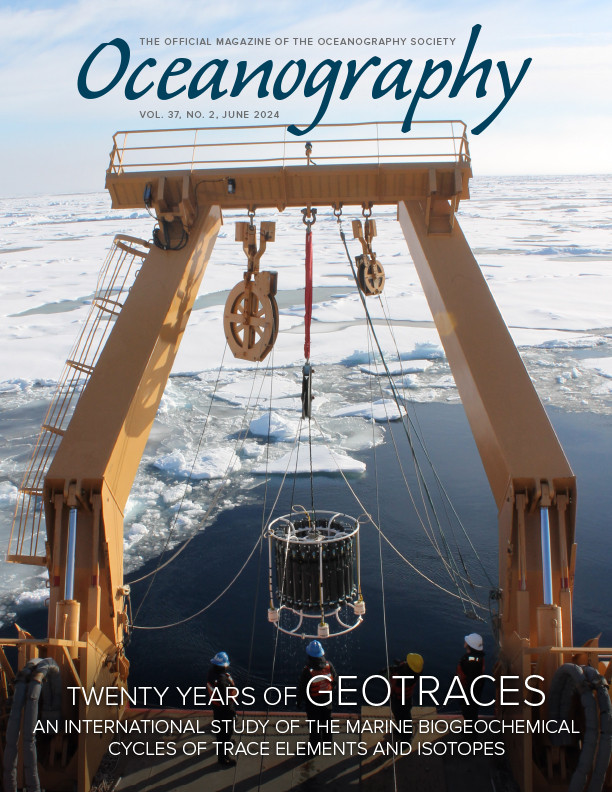Full Text
For the past 20 years, the GEOTRACES program has produced transformative insights into the cycling of trace elements and isotopes (TEIs) in the ocean. Modeled after the 1970s GEOSECS (Geochemical Ocean Sections Study) program, the goals of this ambitious study were to conduct large-scale measurements of TEI concentrations and to determine the biogeochemical processes that controlled their distributions throughout the global ocean. Perhaps the biggest hurdle to overcome was how to accurately measure less than nanomolar concentrations of TEIs from the deck of a 3,000 gross tonnage steel ship. Contaminants were literally everywhere, requiring scientists and crew to become innovative in their attempts to maintain clean conditions for sample collection, storage, and measurement. GEOTRACES encouraged international partnerships while instilling a collaborative approach in the next generation of scientists. The practices GEOTRACES developed led to consistent high-quality measurements across diverse lab groups and provided an extensive and open database. GEOTRACES has truly been a labor of love among all the scientists and crews involved, and the program continues as a lofty example of the discoveries possible when conducting such wide-ranging collaborative research.
– Claudia Benitez-Nelson, Associate Editor, Oceanography

